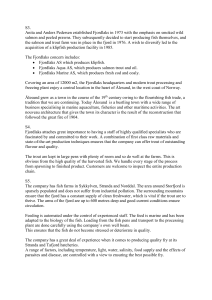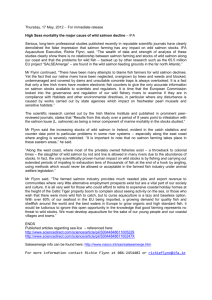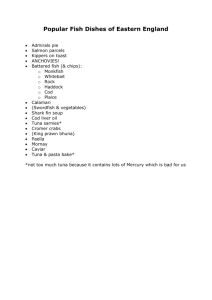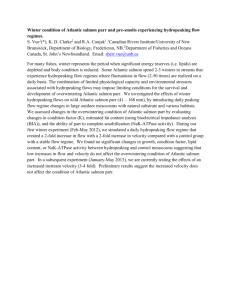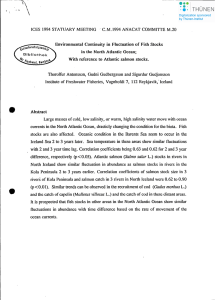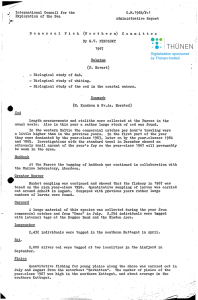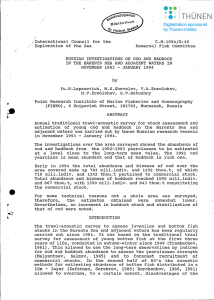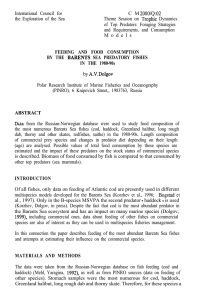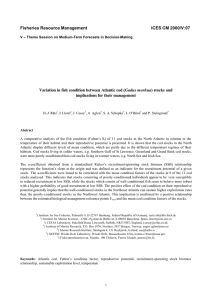Red List - Fish at Risk
advertisement
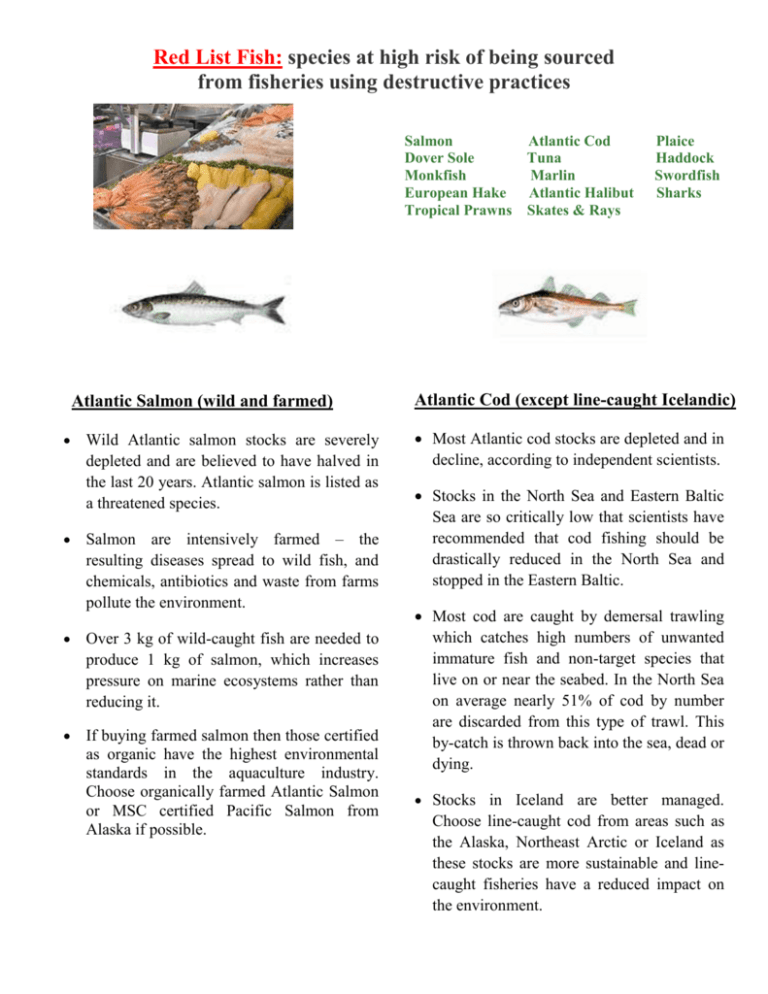
Red List Fish: species at high risk of being sourced from fisheries using destructive practices Salmon Atlantic Cod Dover Sole Tuna Monkfish Marlin European Hake Atlantic Halibut Tropical Prawns Skates & Rays Atlantic Salmon (wild and farmed) Wild Atlantic salmon stocks are severely depleted and are believed to have halved in the last 20 years. Atlantic salmon is listed as a threatened species. Salmon are intensively farmed – the resulting diseases spread to wild fish, and chemicals, antibiotics and waste from farms pollute the environment. Over 3 kg of wild-caught fish are needed to produce 1 kg of salmon, which increases pressure on marine ecosystems rather than reducing it. If buying farmed salmon then those certified as organic have the highest environmental standards in the aquaculture industry. Choose organically farmed Atlantic Salmon or MSC certified Pacific Salmon from Alaska if possible. Plaice Haddock Swordfish Sharks Atlantic Cod (except line-caught Icelandic) Most Atlantic cod stocks are depleted and in decline, according to independent scientists. Stocks in the North Sea and Eastern Baltic Sea are so critically low that scientists have recommended that cod fishing should be drastically reduced in the North Sea and stopped in the Eastern Baltic. Most cod are caught by demersal trawling which catches high numbers of unwanted immature fish and non-target species that live on or near the seabed. In the North Sea on average nearly 51% of cod by number are discarded from this type of trawl. This by-catch is thrown back into the sea, dead or dying. Stocks in Iceland are better managed. Choose line-caught cod from areas such as the Alaska, Northeast Arctic or Iceland as these stocks are more sustainable and linecaught fisheries have a reduced impact on the environment. Haddock (except line-caught Icelandic) Many haddock stocks are under great pressure. Haddock is usually caught in mixed fisheries that catch cod and other depleted fish species. Like cod, haddock is mostly caught by trawling, which catches high numbers of unwanted immature fish and non-target species that live on or near the seabed. This bycatch is thrown back into the sea, dead or dying. In the North Sea on average nearly 49% of haddock by number are discarded from this type of trawl. Stocks in Iceland are healthier and are better managed. Choose line-caught haddock to minimise the impact on other species. Dover Sole Some stocks around the UK are depleted. Like most flatfish, Dover sole are often caught by a particularly destructive type of bottom trawling known as beam trawling – heavy nets and chains are dragged over the sea bed ploughing up everything in their path. Up to 70% of the total catch from beam trawlers is unwanted and is thrown back into the sea, dead or dying. Ensure that your Dover sole is from either the MSC certified fishery in Hastings, or the Celtic Sea, Skaggerak or Kattegat regions as these stocks are considered healthy and are harvested sustainably. Improve the sustainability of your sole by choosing those caught using fixed nets or otter trawls rather than beam-trawled fish. Source: Greenpeace UK


